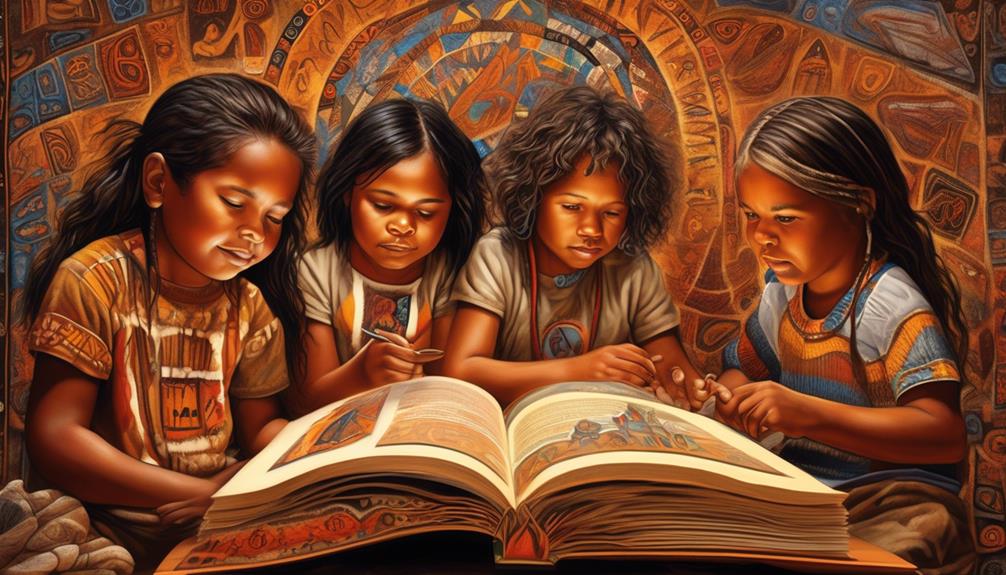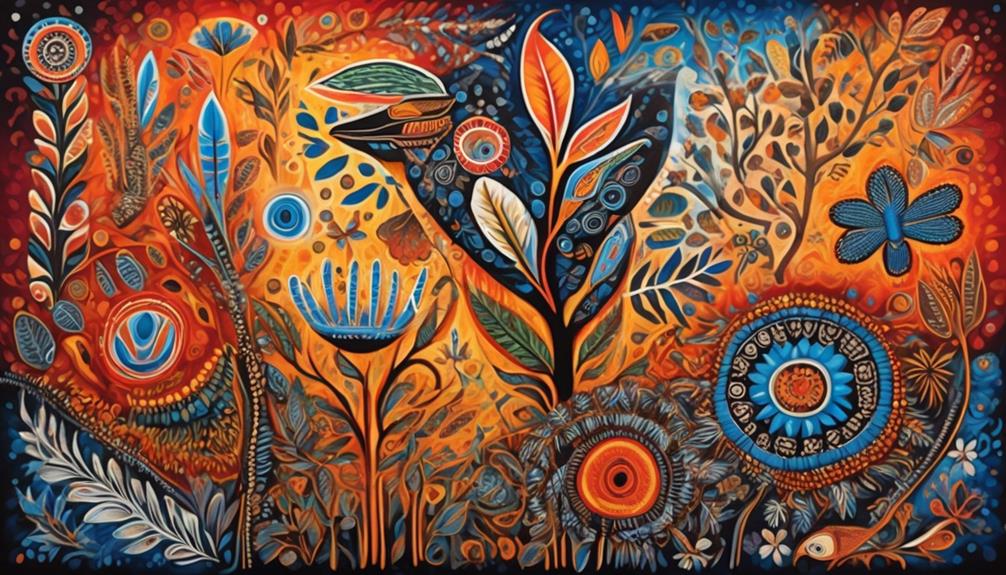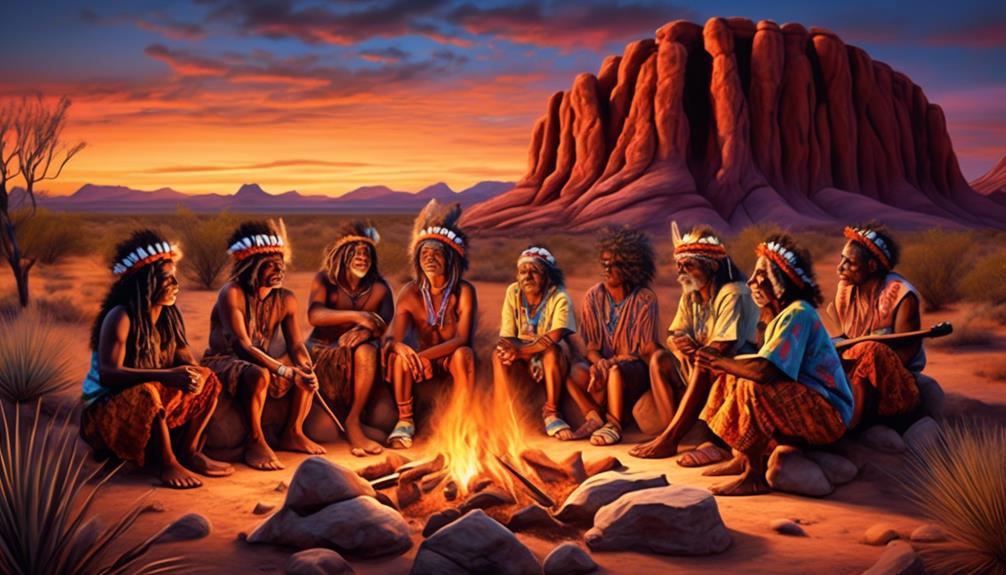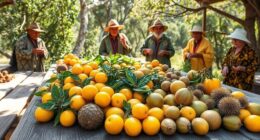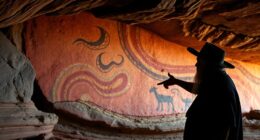As Aboriginal Book Week approaches, it is fascinating to note that the Aboriginal and Torres Strait Islander communities have a rich oral storytelling tradition that dates back tens of thousands of years. This ancient practice continues to influence and inspire contemporary Aboriginal literature.
But how can we incorporate these rich cultural traditions into our Book Week celebrations in a way that honors and respects Indigenous voices and stories?
We've explored some unique and engaging ideas that not only celebrate Aboriginal literature but also provide opportunities for cultural exchange and learning.
Key Takeaways
- Indigenous authors conducting storytelling sessions and engaging students with traditional storytelling
- Blending traditional techniques such as dot painting and basket weaving with contemporary expressions
- Book recommendations by Aboriginal authors offering authentic portrayals of Aboriginal culture
- Promoting literacy and love for reading through various activities, including book clubs, reading circles, and author talks
Storytelling Sessions With Indigenous Authors
Let's invite Indigenous authors to conduct storytelling sessions to bring their rich cultural heritage to our Book Week celebrations. These author talks offer a unique opportunity for students to engage with traditional storytelling while gaining insight into the Indigenous culture. By participating in these sessions, students can develop a deeper appreciation for diverse storytelling traditions and gain a greater understanding of Indigenous perspectives. These sessions not only foster a love for reading and storytelling but also promote cultural awareness and sensitivity.
During these traditional storytelling sessions, Indigenous authors can share their personal experiences and the cultural significance behind their stories. This provides an enriching experience for students, allowing them to connect with the authors on a more personal level and gain a deeper understanding of the stories they share. Additionally, these sessions can serve as a platform for Indigenous authors to showcase their work and inspire the next generation of writers.
Incorporating storytelling sessions with Indigenous authors into our Book Week celebrations creates a dynamic and inclusive environment that celebrates the richness of Indigenous culture and literature. It offers a valuable opportunity for students to learn from diverse voices and gain a deeper understanding of Indigenous storytelling traditions.
Indigenous Art and Craft Workshops
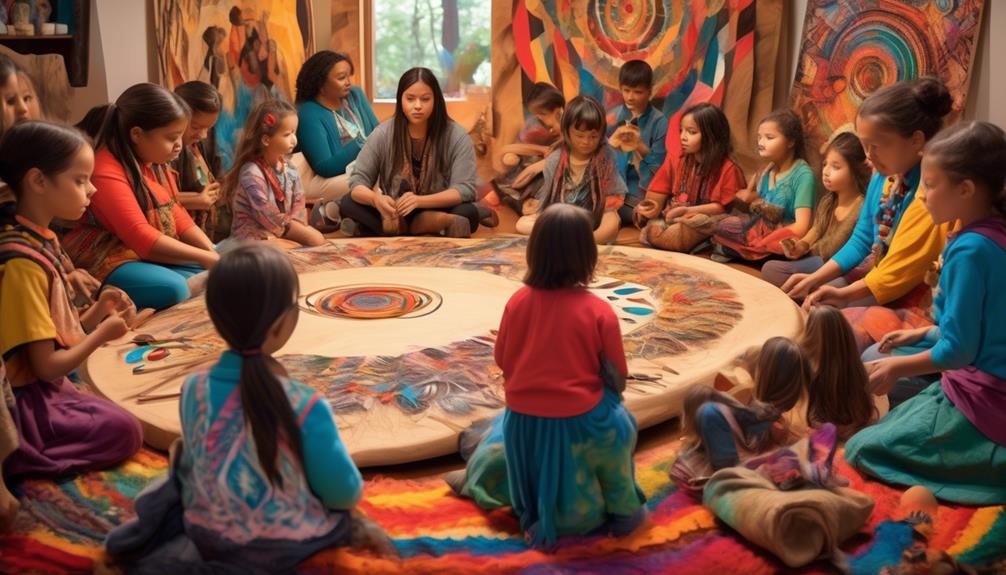
We can enhance our Book Week celebrations by organizing Indigenous art and craft workshops. These workshops offer a rich and immersive experience, allowing participants to delve into the diverse world of Indigenous art and craft. Here's what you can expect from these workshops:
- Exploration of Traditional Techniques:
- Engage in hands-on learning of traditional art forms such as dot painting, basket weaving, or carving, gaining insight into the cultural significance and symbolism behind these practices.
- Learn about the historical context and spiritual connections embedded within each artistic method, deepening your understanding of Indigenous traditions.
- Creation of Contemporary Interpretations:
- Experiment with blending traditional techniques with contemporary artistic expressions, fostering creativity and innovation while respecting the roots of Indigenous artistry.
- Discuss the importance of preserving traditional knowledge and explore how modern interpretations can contribute to the ongoing evolution of Indigenous art.
- Guidance from Indigenous Artisans:
- Receive guidance from Indigenous artisans who are passionate about sharing their cultural heritage, providing valuable insights and fostering a deeper appreciation for Indigenous art and craft.
Engaging in these workshops not only nurtures creativity but also cultivates a profound respect for Indigenous culture and artistry.
Book Recommendations by Aboriginal Authors
Exploring Indigenous art and craft workshops has provided us with a deeper appreciation for traditional artistic practices, and now we turn our attention to the rich literary contributions of Aboriginal authors with compelling book recommendations. Indigenous literature offers a profound insight into the cultural heritage and experiences of Aboriginal communities. Here are some outstanding books by Aboriginal authors that beautifully encapsulate Indigenous poetry, traditional storytelling, and contemporary narratives:
| Title | Author | Description |
|---|---|---|
| "Carpentaria" | Alexis Wright | A mesmerizing novel intertwining Aboriginal spirituality, politics, and the Australian landscape. |
| "Inside My Mother" | Ali Cobby Eckermann | This collection of poetry delves into the author's personal journey, heritage, and Indigenous identity. |
| "My Place" | Sally Morgan | A powerful memoir uncovering the author's Aboriginal roots and the impact of colonization on her family. |
| "The Swan Book" | Alexis Wright | This dystopian novel incorporates traditional storytelling, exploring the effects of climate change on Indigenous communities. |
These books not only offer captivating storytelling but also provide an authentic portrayal of Aboriginal culture, making them essential reads for those seeking a deeper understanding of Indigenous perspectives.
Cultural Workshops and Presentations
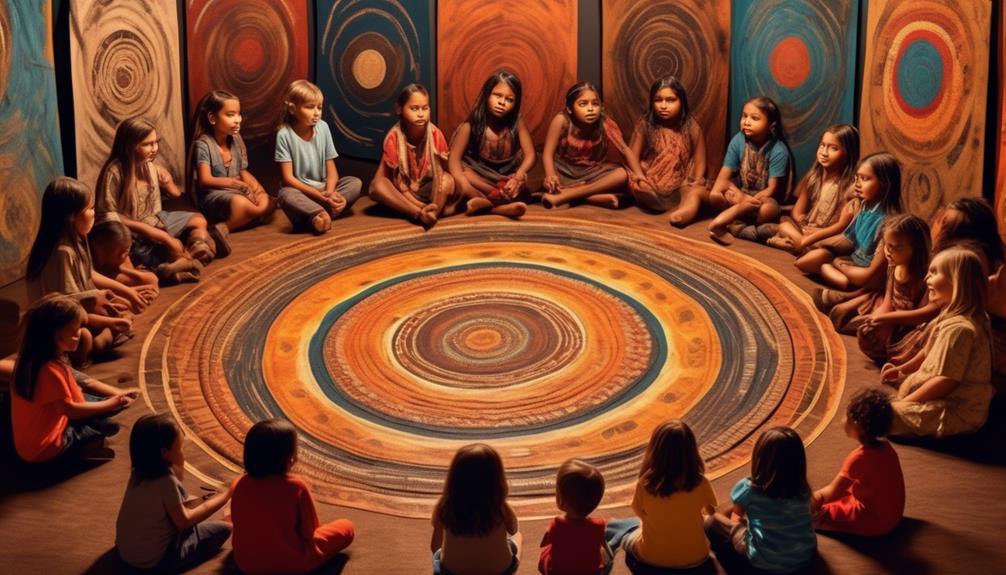
Engaging with cultural workshops and presentations offers a unique opportunity to immerse ourselves in the rich traditions and artistic expressions of Indigenous communities. These experiences provide a deeper understanding of Aboriginal culture and are vital for preserving and celebrating these diverse heritage practices.
Here are some captivating elements to consider:
- Traditional Dance Performances: Witnessing traditional Aboriginal dances is a powerful way to connect with the cultural history and stories of Indigenous peoples. The rhythmic movements and vibrant costumes convey a profound narrative that captivates audiences of all ages.
- Language Preservation Workshops: Language is a cornerstone of any culture, and for Indigenous communities, it holds immense significance. Language preservation workshops offer a chance to learn about the unique linguistic heritage of Aboriginal peoples, including the meanings behind words and phrases that have been passed down through generations.
- Artisan Demonstrations: From intricate beadwork to stunning visual art, artisan demonstrations showcase the remarkable skills and creativity of Aboriginal artists. These workshops provide insight into the cultural significance of various art forms and their role in preserving Indigenous traditions.
Participating in these cultural workshops and presentations not only fosters appreciation for Aboriginal heritage but also promotes cross-cultural understanding and respect.
Collaborative Community Reading Events
Immersing ourselves in the rich traditions and stories of Indigenous communities through cultural workshops and presentations naturally leads us to the collaborative community reading events, fostering a deeper appreciation for Aboriginal heritage and a shared celebration of diverse literary voices. Community partnerships play a pivotal role in organizing these events, bringing together local schools, libraries, and Indigenous organizations to create a space for interactive discussions and shared learning experiences. These events often feature a diverse range of Aboriginal literature, including works by contemporary Indigenous authors as well as traditional stories passed down through generations.
| Benefits of Collaborative Community Reading Events | Description |
|---|---|
| Fosters community engagement and inclusivity | Provides a platform for diverse voices to be heard and shared within the community |
| Strengthens cultural understanding and appreciation | Allows participants to engage with Aboriginal stories and gain a deeper understanding of Indigenous heritage |
| Promotes literacy and love for reading | Encourages reading and appreciation for literature within the community, especially among children and young adults |
Frequently Asked Questions
How Can Non-Indigenous Individuals Respectfully Engage With Indigenous Storytelling and Cultural Workshops?
To respectfully engage with indigenous storytelling and cultural workshops, we prioritize active listening and open-mindedness. We actively seek out opportunities to learn from indigenous elders, community members, and cultural leaders.
Are There Any Specific Protocols or Etiquette to Follow When Participating in Indigenous Art and Craft Workshops?
So, when it comes to participating in Indigenous art and craft workshops, we've got to remember a few things.
First off, it's all about showing respect for the culture and traditions. That means being mindful of the protocols and etiquette, and making sure our engagement is respectful and inclusive.
It's important to approach these workshops with an open mind and a willingness to learn from the community. By doing so, we can create more inclusive events and foster a deeper understanding of Indigenous art and culture.
What Are Some Important Considerations When Selecting Books by Aboriginal Authors for a Community Reading Event?
When selecting books for a community reading event, important considerations include the cultural authenticity and respectful engagement with indigenous storytelling. It's vital to seek out works by Aboriginal authors that accurately represent their experiences and perspectives.
Can Non-Indigenous Individuals Participate in Cultural Workshops and Presentations, and if So, How Can They Do so Respectfully?
So, how can non-indigenous individuals participate in cultural workshops and presentations, while still engaging respectfully and with cultural sensitivity?
Well, first, it's important to listen and learn from indigenous voices. Ask questions, but also respect boundaries.
Acknowledge the privilege of learning from these experiences and strive to be an ally. Utilize resources to educate yourself on the culture and history, and approach the workshops and presentations with an open mind and heart.
What Are Some Ways to Ensure That Collaborative Community Reading Events Are Inclusive and Respectful of Indigenous Perspectives and Voices?
To ensure collaborative community reading events are inclusive and respectful of indigenous perspectives and voices, we prioritize indigenous representation and cultural sensitivity.
We actively seek out indigenous authors and stories, engage with indigenous communities, and incorporate their input in event planning.
We also provide cultural sensitivity training for participants and staff to ensure a respectful and inclusive atmosphere.
These efforts help create a space where indigenous voices are honored and celebrated.
Conclusion
As we close the chapter on Aboriginal Book Week, let's remember that the stories and experiences shared are like seeds planted in the garden of our minds.
Through storytelling, art, and cultural workshops, we've watered these seeds, allowing them to grow and flourish.
Let's continue to nourish and celebrate Indigenous literature and creativity, so that the garden of knowledge may continue to bloom for generations to come.
Nayeli is our dedicated Editor in Chief, bringing her passion for words and keen editorial eye to every piece of content we produce. With years of experience in the field, she ensures that every article and publication meets the highest standards of quality and clarity. Nayeli’s commitment to storytelling and her deep understanding of our mission make her an invaluable leader in our team.
